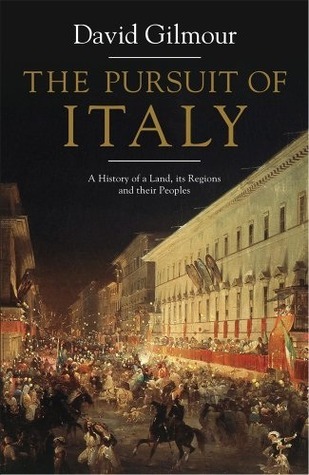Book review: The Pursuit of Italy by David Gilmour

I was a little non-plussed on first picking this book up: I had no idea that Pink Floyd’s guitarist had so intense an interest in Italy that he’d written a book about it. But then, I remembered the famous Pink Floyd concert at Pompeii and it all made sense. After all, having made ‘Dark Side of the Moon’, Dave Gilmour would have had more than enough money to buy a house, or houses, in Italy. But I did expect some sort of mention of Pink Floyd somewhere in the text.
Then I realised that it was a different David Gilmour, a journalist rather than a musician. I was, at first, a little disappointed as I was looking forward to learning how an extended Italian lunch had been the inspiration for ‘Comfortably Numb’ (at one family lunch in Italy when I was young I was reduced to tears by the refusal of my uncle to believe me when I said that I was full and I really, really, really couldn’t eat any more). However, it turns out this other version of David Gilmour is very knowledgeable, and opinonated, about Italy, so I gave up on hoping for Pink Floyd reminiscences and settled down to read his tour through Italian history.
Italy’s history is famously long but Gilmour only takes half the book to get to the 19th century: this is swift run through a rich story. It turns out, Gilmour is most interested in the Risorgimento, the movement in Italy that forced unity onto an Italy that was previously divided between different states, and what has happened since. My mother is from Piedmont so it’s interesting to see the Piedmontese, and in particular King Vittorio Emanuele, cast as the villains of the piece for straitjacketing a reluctant assortment of independent cities and statelets into a unified state.
Gilmour’s basic point is that Italian loyalty is more local and regional than national (except when the Azzurri are playing) and in this I think he’s right. Other countries spent centuries unifying, slowly assembling the sentiments and assembleys necessary to make a truly unified country; in Italy, they did this all in a couple of decades. As such, it’s no surprise that Italy remains a collection of regions forced into a country. And Gilmour’s book is a very good place to understand how that happened and its consequences.
0 Comments